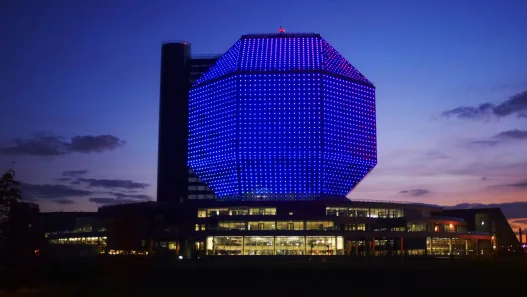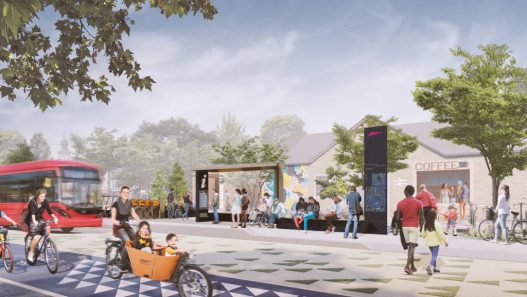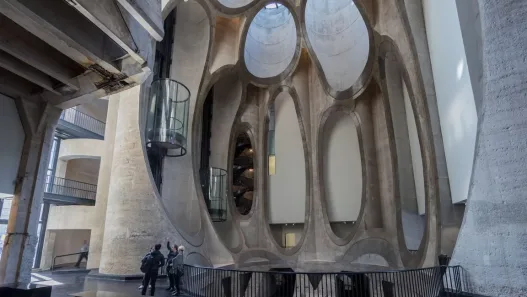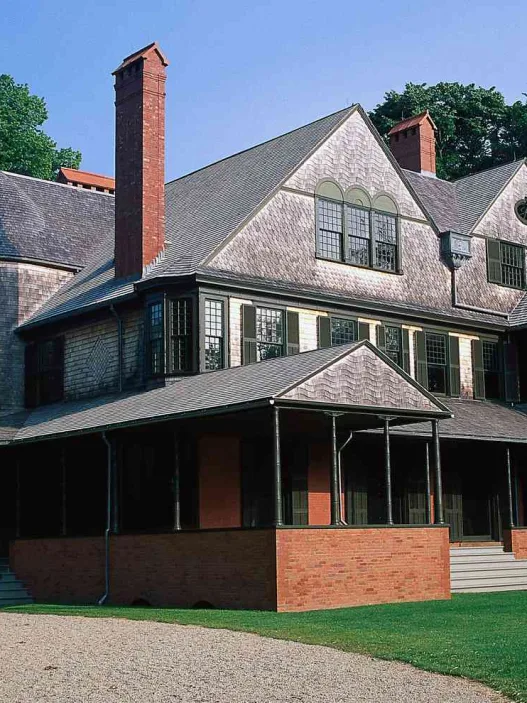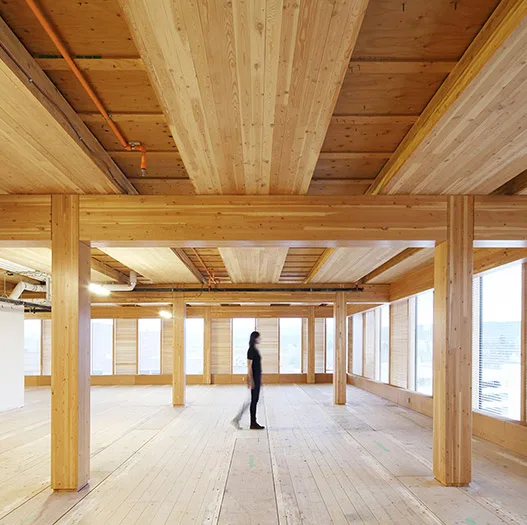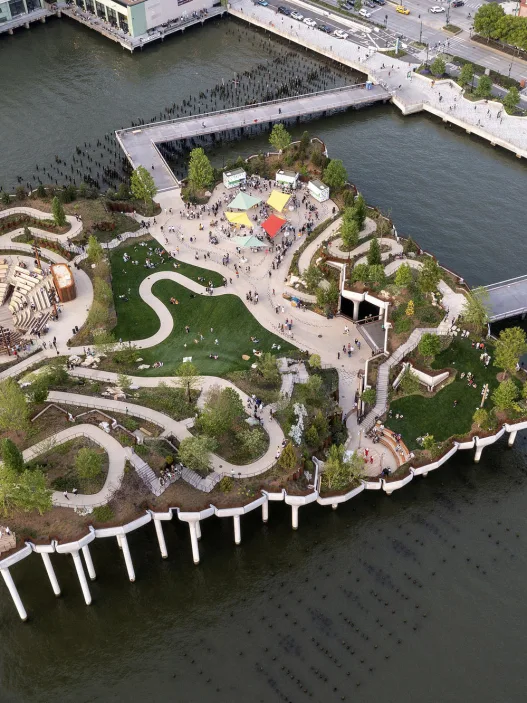African architecture is a rich tapestry woven from the continent’s diverse cultures, histories and environments. It encompasses a wide range of styles, materials and techniques that reflect the unique identities of various communities. From the ancient stone structures of Great Zimbabwe to the vibrant mud architecture of Mali, African architecture is not only functional, but also deeply expressive of the people and traditions it represents.

Defining African Architecture: Diversity and Complexity
Defining African architecture is a complex task due to the continent’s vast diversity. Africa is home to more than 50 countries, each with different cultures, languages and architectural practices. This diversity is reflected in the materials used, the construction techniques employed and the shapes that buildings take. For example, in the arid regions of North Africa, traditional architecture often features thick walls and small windows to keep interiors cool, while in tropical regions structures may be raised on stilts to protect against flooding.
Moreover, African architecture is not limited to traditional forms; it also encompasses contemporary designs that blend traditional elements with modern aesthetics. Architects across the continent are increasingly drawing inspiration from their cultural heritage while incorporating innovative materials and technologies. This dynamic interplay between tradition and modernity is the hallmark of African architecture, making it a constantly evolving field that reflects the complexity of identity and place.
Historical Context of African Architectural Traditions
The historical context of African architecture is deeply intertwined with the continent’s social, political and economic developments. From ancient civilizations such as the Kingdom of Kush and the Mali Empire to colonial influences and post-independence movements, architecture has played an important role in expressing power, identity and cultural continuity.
Many traditional African structures, such as the Great Mosque of Djenné in Mali or the stone ruins of Great Zimbabwe, are testaments to the advanced engineering and artistic skills of their builders. They reflect not only the architectural innovations of their time, but also the social and religious practices of the communities that created them.
Colonialism brought significant changes to African architecture, often imposing foreign styles and materials that disrupted traditional practices. However, the post-colonial period has seen a resurgence of interest in vernacular architectural forms and a desire to reclaim cultural identity through design. This historical journey underlines the resilience of African architectural traditions and their ability to evolve and adapt to changing contexts.
Key Characteristics of Traditional African Architecture
Traditional African architecture is characterized by the use of local materials, common construction methods and a deep connection to the environment. Many structures are built using earth, clay, wood and stone, reflecting the resources available in the region. For example, the use of adobe bricks in the Sahel region not only provides insulation but also blends in with the landscape.
Another key feature is the emphasis on communal living and social interaction. Many traditional African houses are designed around a central courtyard that serves as a gathering space for families and communities. This layout emphasizes the importance of community in African cultures, promoting a sense of belonging and collective identity.
In addition, traditional African architecture often contains symbolic elements that convey cultural beliefs and values. Decorative motifs, carvings and colors can carry significant meaning and represent everything from ancestral connections to spiritual beliefs. This rich symbolism adds depth to the architectural experience, making it an integral part of cultural expression.
The Interaction between Culture and Architecture in Africa
The interaction between culture and architecture in Africa is deep and multifaceted. Architecture serves as a physical manifestation of cultural values, beliefs and practices. It reflects the way societies relate to their environment, social structures and history.
For example, the design of sacred spaces such as mausoleums and mosques often incorporates elements that correspond with spiritual beliefs and practices. The layout and orientation of these structures may align with celestial events or local traditions, strengthening the link between the built environment and cultural identity.
Moreover, architecture in Africa is often a collaborative endeavor involving the collective input of community members. This participatory approach ensures that the built environment reflects the needs and aspirations of the people it serves. As a result, African architecture is not just about aesthetics; it is a living expression of culture that evolves with the communities it harbors.
Global Recognition of African Architectural Heritage
In recent years, African architectural heritage has been increasingly recognized on the global stage. Architects, academics and cultural institutions are increasingly recognizing the importance of traditional and contemporary African architecture as vital contributions to the global architectural discourse.
International exhibitions such as the Venice Architecture Biennale showcase African architects and their innovative designs, highlighting the unique perspectives they bring to the field. This recognition not only celebrates the richness of African architecture, but also challenges stereotypes and misconceptions about the continent’s built environment.
In addition, the preservation of historic sites and traditional practices is gaining momentum, with initiatives aimed at preserving Africa’s architectural heritage for future generations. This global recognition of African architecture underscores its importance as a source of inspiration, knowledge and cultural pride.
In conclusion, African architecture is a vibrant and complex field that reflects the continent’s diverse cultures, histories and environments. By understanding its defining characteristics, historical context and cultural significance, we can appreciate the enduring legacy of African architectural traditions and their relevance in today’s world. As we move forward, it is crucial to continue to celebrate and preserve this rich heritage, ensuring that it remains a vital part of the global architectural narrative.
Architectural Features with African Influence
African architecture is a profound reflection of the continent’s diverse cultures, environments and histories. The architectural features that this rich tapestry reveals are not only functional but also deeply symbolic, embodying the values and traditions of the communities they represent. In this research, we will examine key case studies highlighting the use of local materials, spatial organization, symbolism and ornamentation, traditional construction techniques, and the influence of African architecture.
Use of Local Materials: Sustainability and Adaptation
One of the most defining characteristics of African architecture is the use of local materials, which points to both sustainability and adaptability. Across the continent, builders have historically used what is readily available in their surroundings, leading to a unique architectural identity in harmony with the landscape. For example, in many regions, mud and clay are the primary materials used to build houses and communal structures. These materials not only provide excellent thermal insulation, but also blend seamlessly with the earth, creating structures that feel like an extension of the natural environment.
This practice of using local materials is inherently sustainable as it reduces the need for transportation and the carbon footprint associated with importing building materials. In addition, it fosters a sense of ownership and pride in the community, as local artisans and builders are often involved in the construction process, passing on techniques and knowledge across generations. The adaptability of these materials provides flexibility to the elements, demonstrating how African architecture has evolved to meet environmental challenges.
Spatial Organization: Community Centered Design Principles
The spatial organization of African architecture is deeply rooted in community-centered design principles. Traditional African houses are often organized around a central courtyard that serves as a communal space for gatherings, celebrations and daily activities. This layout encourages social interaction and reinforces the importance of community in African cultures.
In many communities, the design of living spaces reflects the hierarchical structure of the community, with larger, more prominent houses often belonging to leaders or elders. This spatial organization not only meets the needs of families, but also emphasizes the interconnectedness of individuals within the community. The emphasis on communal living is reflected in communal facilities such as kitchens and gathering spaces that encourage collaboration and collective identity.
In addition, the design of public spaces such as marketplaces and meeting spaces are often designed to encourage social participation and economic activity. This focus on community-centered design principles emphasizes that architecture in Africa is not only about shelter, but also about nurturing relationships and developing a sense of belonging.
Symbolism and Ornament: Cultural Narratives in Architecture
Symbolism and ornamentation play a vital role in African architecture, serving as a means of storytelling and cultural expression. Many buildings are adorned with intricate carvings, colorful murals and decorative motifs that convey important cultural narratives and beliefs. These artistic elements are not just decorations; they carry deeper meanings that reflect a community’s identity, values and history.
In the Dogon culture of Mali, for example, the architecture of their cliff-side villages is adorned with symbols representing ancestral spirits and cosmological beliefs. Similarly, the vibrant patterns found on the mud walls of houses in South Africa’s Ndebele society tell stories of heritage and identity. These decorative elements serve to connect individuals to their cultural roots and reinforce a sense of pride in their heritage.
Furthermore, the use of color in African architecture is often symbolic, with certain hues representing various cultural meanings. This rich tapestry of symbolism and ornamentation transforms buildings into living narratives, allowing architecture to communicate the essence of a society’s identity and values.
Traditional Techniques Innovations in Construction Methods
Traditional construction techniques in Africa are a testament to the creativity and resourcefulness of local builders. Many of these methods have been passed down through generations, evolving to meet the needs of contemporary society while maintaining their cultural significance. For example, the use of rammed earth construction, which involves compacting the soil to create solid walls, is a technique that has been practiced for centuries and is gaining renewed interest for its sustainability.
In areas where timber is abundant, traditional joinery techniques are used to create complex timber structures that are both functional and aesthetically pleasing. These methods often do not involve nails or metal fasteners, instead relying on precision craftsmanship to ensure strength and durability.
Moreover, innovations in construction methods are emerging as architects and builders discover new ways to integrate traditional techniques with modern materials and technologies. This fusion not only preserves cultural heritage, but also addresses contemporary challenges such as climate change and urbanization. Valuing traditional techniques, African architecture continues to evolve while remaining true to its rich history.
Case Studies: Iconic Buildings Reflecting African Architectural Influence
To truly appreciate the architectural features of African influence, one can look to the iconic structures that embody these principles. The Grand Mosque of Djenné in Mali, a UNESCO World Heritage site, is one of the best examples of traditional mud architecture. Its impressive façade, adorned with wooden beams and intricate patterns, showcases the use of local materials and the community’s commitment to craftsmanship. The mosque serves as a spiritual and social center, reflecting the central role of religion in society.
Another notable example is the Amani Institute in Nairobi, Kenya, which blends modern design with traditional African elements. The building features open spaces that encourage collaboration and creativity, embodying the community-centered design principles that are the hallmark of African architecture. The use of sustainable materials and innovative construction techniques further emphasizes the adaptability of African architecture in a contemporary context.
Furthermore, the Nelson Mandela Capture Site in South Africa is a powerful tribute to the legacy of the anti-apartheid leader. The architectural design uses local stone and respects the cultural narratives of the region, creating a space that is both reflective and inspiring.
These case studies demonstrate how African architecture is a living expression of culture, history and innovation. They are a reminder of the continent’s rich architectural heritage and its continuing influence on the global stage.
In conclusion, the architectural features of African influence are a testament to the continent’s diversity, creativity and resilience. Through the use of local materials, community-centered design, rich symbolism, traditional techniques and iconic structures, African architecture continues to evolve while honoring its roots. As we explore these features, we gain a deeper appreciation of the cultural narratives and values that shape the built environment in Africa.
The Influence of African Architecture on Contemporary Design
The influence of African architecture on contemporary design is a fascinating narrative of cultural exchange, innovation and adaptation. As the world becomes increasingly interconnected, African architectural ideas and practices are gaining global recognition and respect. This research examines how globalization facilitates the exchange of architectural ideas, the inspiration contemporary architects draw from African traditions, the integration of local knowledge into modern design, and the fusion of traditional and modern elements in architectural styles.
Globalization and the Exchange of Architectural Ideas
Globalization has changed the way architectural ideas are shared and developed around the world. Thanks to advances in technology and communication, architects and designers have easy access to rich sources of knowledge and inspiration from different cultures, including Africa. This exchange has led to a more inclusive architectural dialogue where different influences can be integrated into contemporary designs.
With its rich history and unique characteristics, African architecture has become a source of inspiration for architects worldwide. The principles of sustainability, community-centered design and the use of local materials coincide with global movements towards environmentally sensitive and socially conscious architecture. As a result, many contemporary projects now incorporate African design elements, reflecting a growing appreciation for the continent’s architectural heritage.
Moreover, international collaborations between African architects and their counterparts in other regions are becoming increasingly common. These partnerships encourage a better understanding of cultural contexts and the blending of ideas, resulting in innovative architectural solutions that honor both tradition and modernity.
Contemporary Architects Inspired by African Traditions
A new generation of contemporary architects are increasingly looking to African traditions for inspiration for their designs. These architects recognize the value of local practices and the wisdom embedded in traditional architecture, often emphasizing harmony with the environment and the importance of community.
For example, renowned Ghanaian architect David Adjaye has drawn on his African heritage to shape his work. His designs often reflect a deep respect for cultural narratives and local materials, creating spaces that resonate with the communities they serve. Similarly, South African architect Thulani B. Mthethwa celebrates the cultural identity of the spaces she designs by incorporating traditional forms and techniques into her projects.
This trend is not limited to individuals; architectural firms are also embracing African influences. Integrating traditional motifs, spatial organization and sustainable practices into their designs, these firms are creating buildings that are not only visually striking but also culturally meaningful. The resurgence of interest in African architectural traditions is helping to reshape the narrative around contemporary design by emphasizing the importance of cultural context and identity.
Integrating Indigenous Knowledge into Modern Design Practice
The integration of indigenous knowledge into modern design practices is a crucial aspect of the influence of African architecture on contemporary design. Indigenous knowledge encompasses a wealth of knowledge developed over generations about local materials, climatic considerations and sustainable building practices. By bringing this knowledge together, architects can create designs that are not only aesthetically pleasing, but also environmentally sensitive and culturally appropriate.
For example, the use of passive cooling techniques such as natural ventilation and strategic shading is a practice deeply rooted in traditional African architecture. Contemporary architects are increasingly adopting these methods to improve energy efficiency and reduce reliance on artificial cooling systems in modern buildings. This approach not only respects the wisdom of local practices, but also addresses pressing global challenges such as climate change.
Furthermore, the emphasis on community participation in the design process is another aspect of local knowledge that is gaining traction in contemporary architecture. By involving local communities in decision-making, architects can ensure that their designs reflect the needs and aspirations of the people who will live in them. This collaborative approach fosters a sense of ownership and pride, reinforcing the cultural significance of the built environment.
Architectural Styles: Fusion of Traditional and Modern Elements
The fusion of traditional and modern elements in architectural styles is a defining feature of contemporary African design. Architects often blend traditional forms, materials and techniques with modern aesthetics and technologies as they seek to create spaces that will resonate with both local and global audiences.
This fusion can be seen in projects across the continent and beyond. The African Renaissance Monument in Dakar, Senegal, for example, combines traditional African symbolism with modern design principles to create a striking landmark celebrating the continent’s cultural heritage. Similarly, the Zeitz Museum of African Contemporary Art in Cape Town showcases a modern architectural approach while honoring the site’s historical context.
In addition to visual aesthetics, this fusion extends to functionality. Contemporary designs often incorporate traditional spatial organization, such as courtyards and common areas, into modern layouts. This approach not only enhances social interaction, but also creates spaces that can be adapted to the needs of different communities.
The blending of traditional and modern elements in architectural styles reflects a broader trend towards inclusivity and cultural appreciation in contemporary design. As architects continue to explore the rich heritage of African architecture, they are contributing to a more diverse and dynamic architectural landscape that celebrates the past while looking to the future.
Ultimately, the influence of African architecture on contemporary design is a testament to the power of cultural exchange and innovation. Thanks to globalization, contemporary architects are drawing inspiration from African traditions, integrating local knowledge into modern practices and creating a fusion of architectural styles that honors both heritage and progress. As this dialog continues to develop, African architecture will undoubtedly play a vital role in shaping the future of design on a global scale.
The Role of Technology in Modern African Architecture
Technology is reshaping the landscape of architecture across the globe, and Africa is no exception. As the continent embraces modern developments, architects are finding innovative ways to integrate technology into their designs, enhancing both the aesthetic and functional aspects of their work. This research focuses on how digital tools enhance design and visualization, advances in sustainable building materials, the incorporation of smart design into traditional frameworks, and the role of technology in fostering community engagement.
Digital Tools: Improving Design and Visualization
The advent of digital tools has revolutionized the way architects approach design and visualization in modern African architecture. Software programs such as Building Information Modeling (BIM) and Computer Aided Design (CAD) allow architects to create detailed and accurate representations of their projects. These tools enable designers to visualize their concepts in three dimensions, facilitating a better understanding of spatial relationships and aesthetics.
In Africa, where different cultural contexts and environmental factors play an important role in architectural design, these digital tools are invaluable. They allow architects to experiment with various design elements, materials and layouts before construction begins. For example, by simulating how natural light interacts with a building throughout the day, architects can optimize energy efficiency and improve the overall user experience.
Moreover, digital tools streamline the design process by facilitating collaboration between architects, engineers and clients. This collaborative approach ensures that all stakeholders are aligned and can contribute their views, resulting in designs that are not only innovative but also reflect the needs and aspirations of society. As a result, technology is expanding the creative possibilities of architects in Africa, allowing them to push the boundaries of design while adhering to cultural and environmental contexts.
Innovative Materials: Advances in Sustainable Building Applications
The quest for sustainability in architecture has led to significant developments in innovative materials, particularly in the context of African architecture. As the continent faces unique challenges such as climate change and rapid urbanization, architects are increasingly turning to new materials that promote sustainability and durability.
For example, the development of eco-friendly materials such as rammed earth blocks, bamboo and recycled plastics is gaining traction. These materials not only reduce the environmental impact of construction, but also often have lower costs and shorter construction times. Compressed earth blocks, for example, use locally sourced soil, minimizing transport emissions and supporting local economies.
In addition, advances in technology have enabled the production of materials that improve energy efficiency. Insulating materials that reflect heat or absorb moisture can significantly improve the thermal performance of buildings, making them more comfortable and reducing energy consumption. The focus on innovative materials reflects a broader commitment to sustainable building practices in modern African architecture, ensuring that new developments are environmentally sensitive and culturally appropriate.
Smart Design: Incorporating Technology into Traditional Frameworks
The integration of technology into traditional architectural frameworks is the hallmark of modern African design. Smart design goes beyond aesthetics; it incorporates technological advances to improve functionality and efficiency while respecting cultural heritage.
For example, architects are increasingly using smart home technologies that allow for automated lighting, heating and security systems. These features not only increase the convenience of living spaces, but also promote energy savings. In regions where electricity supply can be inconsistent, such technologies can significantly improve the quality of life for residents.
Moreover, the use of renewable energy sources such as solar panels is becoming increasingly common in African architecture. By integrating these technologies into traditional designs, architects can create buildings that are not only environmentally friendly but also economically viable. This fusion of technology and tradition allows for a more holistic approach to design, ensuring that modern developments respect and reflect the cultural identities of their communities.
Community Engagement: Leveraging Technology for Participatory Design
Technology also plays an important role in encouraging community participation in the architectural design process. Participatory design approaches that involve the community in decision-making are becoming increasingly important in modern African architecture. Digital platforms and tools allow architects to gather input from residents, ensuring that their voices are heard and their needs are met.
For example, virtual reality (VR) and augmented reality (AR) technologies allow community members to visualize proposed designs in an immersive way. This engagement helps residents understand the impact of new developments on their environment and encourages meaningful feedback. By leveraging technology, architects can create a more inclusive design process that empowers communities and encourages a sense of ownership over their built environment.
Furthermore, social media and online surveys provide architects with valuable insights into community preferences and concerns. This data-driven approach allows for designs that are not only aesthetically pleasing, but also functional and responsive to the needs of the people who will live in them.
As a result, the role of technology in modern African architecture is multifaceted and transformative. From enhancing design and visualization with digital tools to advancing sustainable building practices with innovative materials, technology is reshaping the architectural landscape. By incorporating elements of smart design into traditional frameworks and leveraging technology for community engagement, architects are creating spaces that are not only beautiful but also culturally resonant and environmentally sensitive. As Africa continues to embrace technological advances, its architectural future will be bright, promising a harmonious blend of tradition and innovation.
Cultural Significance of African Architectural Influence
The cultural significance of African architecture extends far beyond mere aesthetics; it embodies the rich tapestry of identity, heritage and community interaction that defines the continent. As modern architecture increasingly reflects local cultures, it is becoming a means to preserve and celebrate the narratives that have shaped African societies. This research examines how identity and heritage are reflected in modern design, the importance of public spaces for community engagement, the intersection of art and architecture, and the preservation of cultural narratives through contemporary architecture.
Identity and Heritage: Reflecting Local Cultures in Modern Design
At the heart of African architecture lies a deep connection to identity and heritage. Modern designs are often inspired by traditional forms, materials and practices, creating a dialog between past and present. This reflection of local cultures in contemporary architecture serves not only to celebrate heritage but also to foster a sense of belonging within communities.
For example, many architects incorporate local building techniques and local materials into their designs. This practice not only honors the craftsmanship of previous generations, but also ensures that the buildings resonate with the cultural identity of the area. By using traditional motifs, colors and spatial arrangements, architects create spaces that are deeply rooted in the local context, allowing residents to see themselves and their stories reflected in the architecture around them.
Moreover, integrating cultural symbols and narratives into modern designs helps to reinforce community pride and continuity. Buildings become more than functional spaces; they become landmarks that tell the stories of the people who live in them, fostering a sense of ownership and connection to the environment.
Public Spaces: Design for Social Interaction and Participation
Public spaces play a crucial role in promoting social interaction and participation, and African architecture is increasingly recognizing the importance of these shared spaces. Well-designed public spaces encourage social interaction, cultural exchange and a sense of belonging among residents, making them vital components of urban planning.
In many African cities, architects are redesigning public spaces to be more inclusive and accessible. Parks, plazas and community centers are being designed not only for recreation, but also for cultural events, markets and gatherings. By creating multifunctional spaces that respond to the diverse needs of society, architects are promoting social cohesion and improving the quality of life of urban residents.
For example, the revitalization of urban areas in cities such as Nairobi and Johannesburg has focused on creating vibrant public spaces that celebrate local culture and heritage. These spaces often feature art installations, performance spaces and markets that reflect the community’s identity and encourage residents to interact with each other and their surroundings.
The design of public spaces in African architecture emphasizes the importance of community interaction and reminds us that architecture is not only about buildings, but also about the people who live in them. By creating environments that encourage social inclusion, architects contribute to the overall well-being of societies.
Art and Architecture: The Intersection of Aesthetics and Functionality
The intersection of art and architecture is a defining feature of African architectural influence. In many African cultures, art is an integral part of everyday life and this relationship is beautifully reflected in the built environment. Architects are becoming increasingly aware of the importance of aesthetics in their designs, creating spaces that are not only functional but also visually inspiring.
From intricate carvings and murals to vibrant color palettes and unique forms, African architecture often incorporates artistic elements that tell stories and convey cultural significance. These artistic expressions enhance the emotional resonance of buildings, making them more than physical structures; they become embodiments of cultural narratives.
For example, the use of traditional African patterns and motifs in modern architectural designs serves to connect the past with the present. This combination of art and architecture creates a distinct visual language that speaks to the identity of the community. By prioritizing aesthetics as well as functionality, architects enrich the architectural landscape and contribute to a deeper appreciation of cultural heritage.
Furthermore, art installations and sculptures integrated into public spaces further enhance the cultural significance of architecture. These artistic elements invite interaction and reflection, encouraging residents to engage with their surroundings and the stories they tell.
Preserving Cultural Narratives through Contemporary Architecture
Contemporary architecture in Africa plays a vital role in preserving cultural narratives. As societies develop and urbanization accelerates, there is a growing need to ensure that cultural heritage is not lost in the face of modernization. Architects are increasingly charged with the responsibility to honor and preserve these narratives while creating spaces that meet contemporary needs.
One approach to preserving cultural narratives is adaptive reuse, where existing buildings are repurposed for modern use while retaining their historical significance. This practice not only reduces waste, but also allows communities to maintain a tangible connection to their past. Architects breathe new life into cultural landmarks by transforming old buildings into new spaces for commerce, art or community gatherings.
In addition, contemporary architecture often aims to document and celebrate the stories of marginalized communities. By incorporating elements that reflect the diverse histories and experiences of different groups, architects can create spaces that honor the richness of cultural narratives. This approach promotes inclusivity and ensures that all voices are represented in the architectural landscape.
In conclusion, the cultural significance of African architecture is profound and multifaceted. Through the reflection of identity and heritage in modern design, the creation of public spaces that encourage social interaction, the intersection of art and architecture, and the preservation of cultural narratives, contemporary architecture not only shapes the physical environment, but also enriches the cultural fabric of African societies. As architects continue to explore and celebrate these influences, they contribute to a vibrant and dynamic architectural narrative that honors the past while embracing the future.
The Future of African Architecture in a Global Context
As the world becomes increasingly interconnected, the future of African architecture is poised to play an important role in global contexts. The unique challenges and opportunities presented by the continent are shaping innovative design practices that prioritize sustainability, resilience and cultural identity. This research explores emerging trends in architecture, global perspectives through comparative analysis, the importance of architectural education, visionary case studies, and the enduring influence of African architecture on contemporary design.
Emerging Trends: Sustainability and Flexibility in Design
Sustainability and resilience are at the forefront of architectural trends in Africa as architects and designers respond to environmental challenges and the need for adaptable solutions. With climate change posing significant risks for many regions, there is a growing emphasis on creating buildings that are not only environmentally friendly, but also able to withstand the effects of extreme weather.
One of the most notable trends is the use of sustainable materials and construction techniques. Architects are increasingly incorporating locally sourced materials such as bamboo, rammed earth and recycled components into their designs. These materials not only reduce the carbon footprint of construction, but also support local economies by utilizing readily available resources.
In addition, the integration of renewable energy technologies such as solar panels and rainwater harvesting systems is becoming common in new developments. These features not only increase the sustainability of buildings, but also strengthen communities by providing self-sufficient energy and water solutions.
Flexibility in design also extends to urban planning, where architects rethink the layout of cities to adapt to future growth and environmental changes. This includes creating green spaces, improving public transportation and designing flexible spaces that can adapt to changing community needs. By prioritizing sustainability and resilience, African architecture sets a precedent for responsible design that can inspire global practices.
Global Perspectives: A Comparative Analysis of Architectural Practices
The architectural landscape in Africa is rich and diverse, shaped by a myriad of cultural, historical and environmental factors. Viewed in a global context, it is essential to conduct a comparative analysis of architectural practices to understand how African architecture can be informed by and influenced by international trends.
While architecture in many Western countries often emphasizes individualism and iconic structures, African architecture often prioritizes community and collective identity. This difference in approach can lead to innovative solutions that address local needs while also resonating with global audiences. For example, the use of communal spaces in African architecture contrasts with the often segregated public spaces found in many urban centers around the world. This focus on community-oriented design can offer valuable insights into creating inclusive environments that encourage social interaction.
Furthermore, the integration of traditional building techniques with modern technologies offers a unique opportunity for cross-cultural exchange. Architects in Africa are increasingly collaborating with their global counterparts, sharing knowledge and practices that enrich both local and international design. This exchange fosters a deeper understanding of how architecture can act as a bridge between cultures, promoting sustainable practices that are sensitive to both local traditions and global challenges.
Architecture Education: Encouraging the Next Generation of Designers
The future of African architecture is inextricably linked to the education and training of the next generation of designers. As the demand for innovative and sustainable architectural solutions grows, it is crucial that aspiring architects are equipped with the knowledge and skills necessary to navigate the complexities of contemporary design.
Architectural education in Africa is evolving to include a more holistic approach that emphasizes sustainability, cultural sensitivity and social engagement. Many universities now offer programs that focus on these principles, encouraging students to explore the intersections of architecture, social issues and environmental stewardship.
Furthermore, partnerships with international institutions can enrich students’ understanding of architecture in a broader context by exposing them to global practices and perspectives. By fostering a diverse and inclusive educational environment, African architecture schools can produce a new generation of designers equipped to meet the challenges of the future while honoring their cultural heritage.
Case Studies: Visionary Projects Shaping the Future of African Architecture
Many visionary projects across the continent exemplify the future of African architecture, showcasing innovative designs that meet local needs while pushing the boundaries of creativity. These case studies highlight the potential of architecture to transform societies and inspire change.
The “African Renaissance Monument” in Dakar, Senegal, is a notable example. This monumental structure not only serves as a symbol of national pride, but also incorporates sustainable design elements such as solar energy and green spaces. The project reflects a commitment to cultural identity while embracing modern architectural practices.
Another inspiring project is the “Mali Museum” in Bamako, which integrates traditional Malian building techniques with contemporary design. The museum serves as a cultural center promoting local art and heritage, while providing a space for community engagement and education.
These projects demonstrate how architecture can be a powerful tool for social change, fostering a sense of belonging and pride within communities. Showcasing innovative designs that resonate with local cultures, these case studies pave the way for the future of African architecture.
Conclusion The Lasting Impact of African Architecture on Contemporary Design
Looking to the future, the influence of African architecture on contemporary design is undeniable. Its unique blend of cultural heritage, sustainability and community engagement is shaping a new architectural narrative that resonates not only on the continent but also on a global scale.
Emerging trends of sustainability and resilience, combined with a commitment to preserving cultural identity, are setting a precedent for responsible design practice. As architects continue to explore innovative solutions that address local challenges while embracing global perspectives, African architecture will undoubtedly leave an indelible mark on the future of design.
As a result, the future of African architecture is bright and characterized by a dynamic interplay of tradition and innovation. As the world looks to Africa for inspiration, the continent’s architectural practices will continue to evolve, fostering a rich dialogue that celebrates cultural diversity and promotes sustainable living. The lasting impact of African architecture is a testament to its ability to adapt, inspire and shape the built environment for generations to come.




